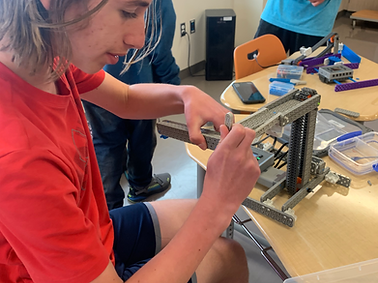
Vex IQ Robotics Competition
-
Age: Ages 8-12
-
Skill Level: Competiton
-
Format: In Person Class
-
Duration: 3 hours/per session,
-
Total: Meet twice a week
-
Price: Monthly membership
VEX IQ for age 8-12
Beginner
Introduction to Robotics and Coding for Beginners
This level is designed for students with zero prior knowledge in robotics and machine coding, typically aged between 7 to 11 years old. Throughout this 12-week course, students will acquire fundamental knowledge on utilizing motors, gears, and sensors, alongside learning the basics of coding.
Each class will concentrate on a specific building mechanism or module, enabling students to grasp its functionalities thoroughly. Additionally, students will be guided to program their robots to execute one or two tasks per session.
To foster collaboration, communication, and soft skills development, students will be paired up as partners for each class. This teamwork approach encourages active participation and mutual learning among peers.


Advanced
Advanced Robotics and Coding This level is designed for students who have completed the fundamental knowledge course and are eager to delve deeper into more complex building mechanisms and coding skills. Over the course of 12 weeks, students will explore advanced concepts in both hardware and software.Building upon their foundational understanding, students will learn to integrate two or more building modules or mechanical structures, enabling their robots to tackle two or three simultaneous tasks, which are typically more intricate in nature.Moreover, advanced coding techniques will be introduced to support the implementation of these complex building mechanisms. Students will gain proficiency in coding methodologies that optimize robot performance and task completion.In addition, students will explore the integration of multiple sensors to enhance robot functionality, allowing them to exhibit behaviors more akin to human-like cognition. For instance, combining a distance sensor and an optical sensor can simulate the functionality of a human eye, enabling the robot to navigate tasks with greater precision and adaptability.


